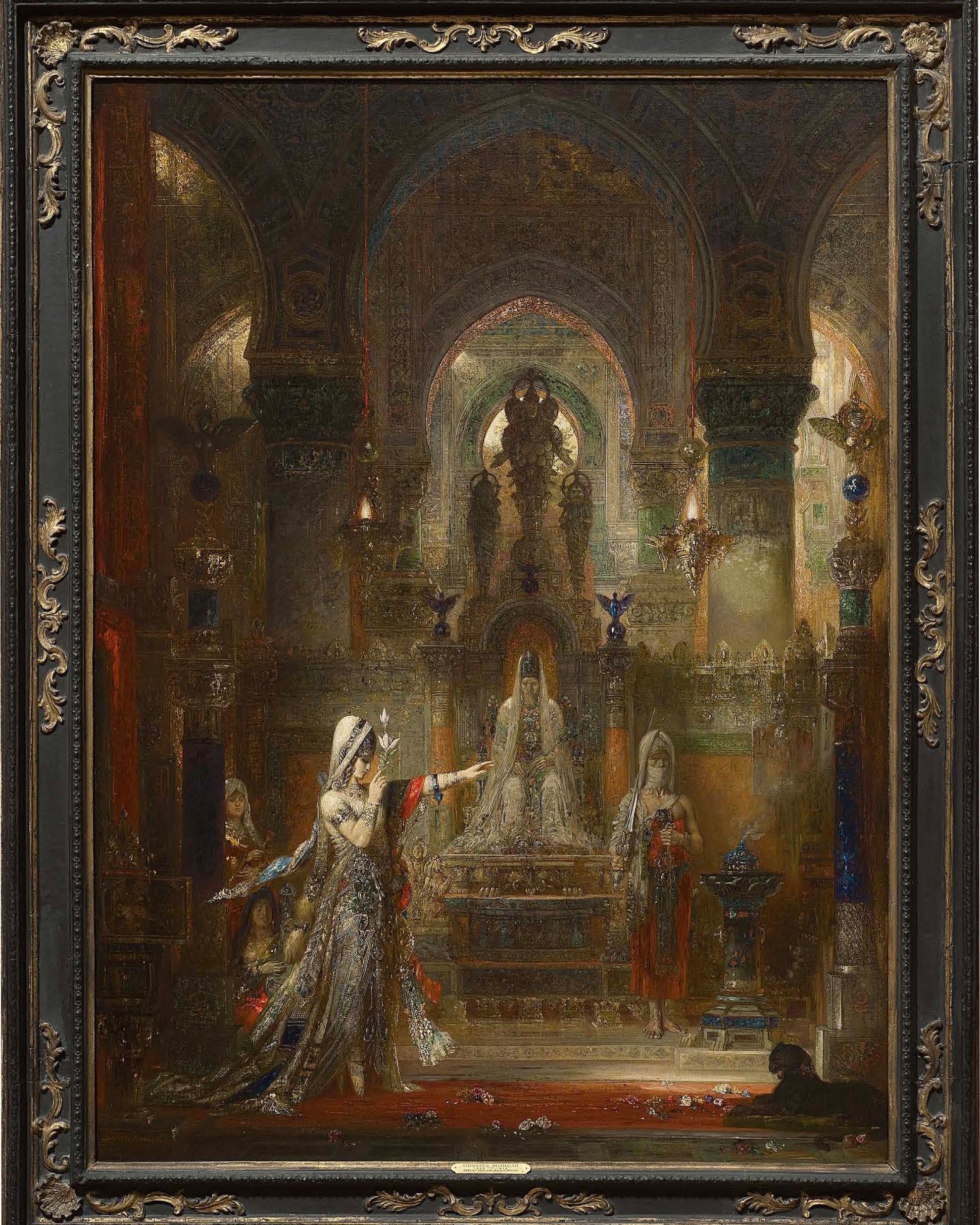
Symbolist Striptease
SYMBOLIST STRIPTEASE
Joris-Karl HuysmansOddly, the period from the end of the 1800s to the turn of the 1900s was All Salome All of the Time. Ah, the mysteries of fashion! Writers (Gustave Flaubert, Oscar Wilde, Stéphane Mallarmé, Jules Laforgue, Guillaume Apollinaire), artists (Gustave Moreau, Aubrey Beardsley, Gustav Klimt), and musicians (Jules Massenet, Richard Strauss) vied to evoke the dais – something like a temple altar crossed with the stage at the Folies Bergère – upon which Salome, daughter of Princess Herodias and therefore step-daughter of King Herod, did her dance of the seven veils. The Gospels say nothing about her dance being lewd or racy. The first such account comes from St. Augustine, a Church Father with a strong sideline in libido. Fifteen centuries later, Salome would have her moment as a Symbolist darling. We pay tribute to that long-ago fan dance and a chapter of European civilization by proposing two versions of Salome as painted by Gustave Moreau, along with Joris-Karl Huysmans’ ekphrastic description of them from his 1884 novel and cult classic À Rebours.








